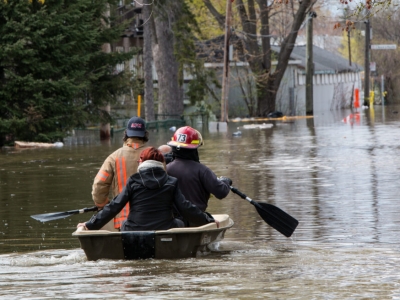
Carleton University students documented and carried on the condition assessment of the Kuño Tambo church wall paintings in Peru, dated back to the 17th century. (Provided Photo)
By Kristy Strauss
The original wall paintings of a church in Peru and a heritage building complex in Morocco – both dating back to the 17th century – have now been accurately documented and studied as a first step for their conservation, thanks to a group of students from the Azrieli School of Architecture and Urbanism.
“This was a very special experience for us,” says Crystal Hanley, who worked with a group of three other students on the Peru project. “It was great to be a part of something that would make a difference.”
The students worked in collaboration with the Getty Conservation Institute (GCI), an operating program of the J. Paul Getty Trust, dedicated to advancing conservation practice through the creation and delivery of knowledge.
The students were divided into two teams to collaborate on each project, and worked under the direction of Mario Santana Quintero, an assistant professor in the architectural conservation and sustainability engineering program in the Department of Civil and Environmental Engineering. Santana Quintero has worked with the GCI in the past. Students also worked with Carleton’s consultants Chris Ouimet and John Gregg.
Sarah Ward, Ken Percy and Zeynep Ekim carried on the survey and developed architectural drawings for the Kasbah of Taourirt in Morocco. The heritage site is one of the most visited in the region.
“It was kind of like a large castle, with multiple areas around it,” Ward explains, adding that the project gave her invaluable hands-on experience. “We were applying what we learned in the classroom setting. Seeing how it came together to make a final product was great.”
Hanley, along with fellow students Jesslyn Granda and Ilana Hadad, worked on documenting and assessing the original wall paintings of a church in Peru.
Granda says she also gained hands-on experience through the project, but also witnessed first-hand the impact her work made on the residents.
“We realized the significance of our work, both for the project but also to these people,” she says. “You work so intimately with them and their church that still functions as a church. It’s part of their culture and heritage. We saw the significance of this project and what it meant to these people who were so kind to welcome us into their home and village.”
Ouimet, who assisted the team in Morocco and Peru, adds that the students also learned how quickly plans can change.
“You go in with this idea and the way you do it ends up being totally different,” he says, adding that the students had to create some new plans while on the ground.
Santana Quintero was thrilled with the students’ enthusiasm towards the projects and the educational experience they received outside the classroom.
He feels that the projects also helped students see that there are careers in conservation when they graduate.
“I can see that we have contributed to their professional growth, and it feels nice that we have convinced them that there’s a future in heritage conservation,” Santana Quintero says. “There are some in architecture and engineering that prefer to work on new buildings, rather than existing buildings. But I think through this experience, students gained a little more.”
For more information on the Getty Conservation Institute, visit: www.getty.edu/conservation.



